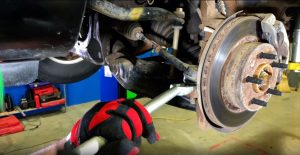
Turn signals are a fundamental safety feature, alerting other drivers of your intentions to turn or change lanes. However, when vehicle owners install aftermarket accessories—such as alarm systems, lighting upgrades, or audio equipment—these add-ons can sometimes interfere with the proper function of turn signals. Understanding how aftermarket accessories affect turn signal circuits and knowing what to do when issues arise can help drivers maintain reliable signaling and stay safe on the road. This article explains the common ways aftermarket accessories cause turn signal problems and offers tips for preventing and resolving interference.
How Aftermarket Accessories Impact Turn Signal Circuits
Aftermarket accessories often require tapping into a vehicle’s electrical system, which can alter the original wiring and electrical load. Improper installation or poor-quality components can create unintended electrical pathways or overload circuits. For example, adding LED light bars or custom lighting that shares wiring with turn signals might cause the signals to flash erratically or fail.
Alarm systems and remote starters frequently interface with the vehicle’s lighting to provide visual feedback. If these systems are not correctly integrated, they may override the turn signal circuit, causing signals to blink continuously or not at all. Similarly, high-powered audio amplifiers can create electrical noise that disrupts sensitive lighting circuits. Selection of the Auto Repair in Wheatridge, CO based service would be perfect here.
Symptoms of Aftermarket Interference with Turn Signals
When aftermarket accessories interfere with turn signals, drivers may notice a range of symptoms. These include signals that flash too fast (hyper-flashing), too slow, or irregularly. Sometimes, signals may fail to cancel after a turn or stay on constantly, creating confusion for other drivers.
Other signs include blown fuses, dim or flickering bulbs, or complete loss of turn signal function on one or both sides. These problems often coincide with the operation of the aftermarket accessory, such as when the alarm is armed or when custom lights are activated.
Diagnosing and Troubleshooting Interference Issues
Resolving interference caused by aftermarket accessories requires careful diagnosis. Technicians begin by isolating the accessory circuits from the turn signal wiring to identify the source of the problem. Using diagnostic tools, they check for improper grounding, voltage fluctuations, and wiring conflicts.
In many cases, rewiring the accessory with dedicated power and ground lines separate from the turn signal circuit can solve the problem. Installing resistors, relays, or voltage regulators may also help stabilize the electrical load and prevent interference.
Preventing Turn Signal Problems with Aftermarket Installations
The best way to avoid turn signal interference is to have aftermarket accessories installed by experienced professionals who understand automotive electrical systems. Proper wiring practices, including using the correct connectors, fuses, and grounding points, are crucial.
Before installation, owners should verify that the accessory is compatible with their vehicle’s electrical system and check for any known issues. Keeping the vehicle’s electrical system well-maintained and avoiding unauthorized or DIY installations can also reduce the risk of interference.
Conclusion
Aftermarket accessories add value and personalization to vehicles but can unintentionally disrupt turn signal function if not installed correctly. Recognizing the signs of interference and seeking professional help ensures your turn signals remain reliable and safe.






